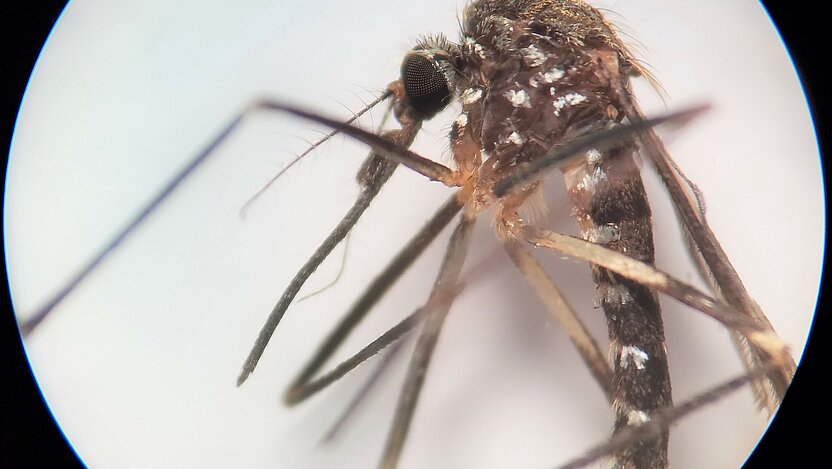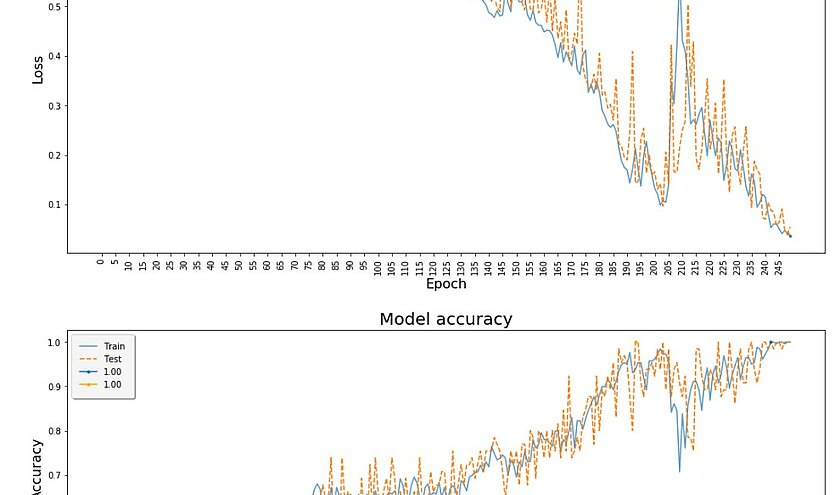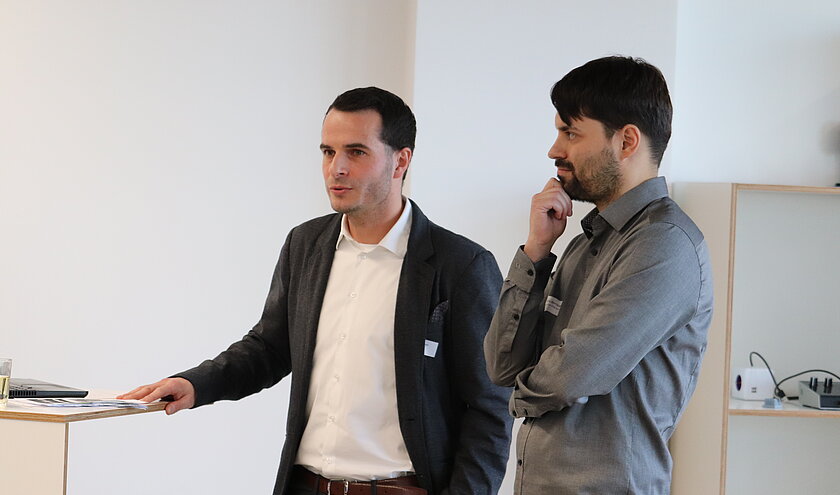[1]
In Spanish, 'mosquito' refers to a 'small fly' - a harmless term for an insect that is by no means harmless and has taken on global proportions. Up to 500 million new malaria infections occur annually, and viruses transmitted by mosquitoes, such as the Zika virus in Latin America in 2015, cause epidemics time and again. In Germany, too, mosquitoes and other disease-transmitting mosquitoes are again – or rather: still, as we will learn – a real challenge.
We spoke with HNU scientists PD Dr. Elmar Buchner and Dr. Martin Schmieder, who are leading the pilot study at the DigiHealth Institute (opens in a new window), about malaria mosquitoes, the use of satellite images and the advantage of digital traps in mosquito research and learned what is special about the SWAMMP project.
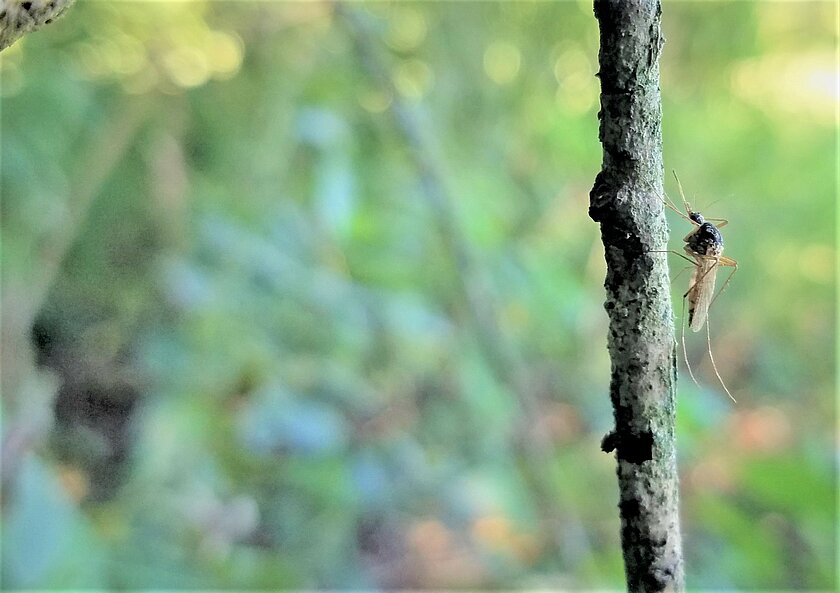
[2]
The tricky thing about it: the mosquitoes do not only reproduce in the semi-natural waters, which come close to their original habitats, but meanwhile colonize the most diverse corners and niches in town and country, including quite curious breeding grounds: The conquest of empty cola cans is just one example of the insects' remarkable talent for constantly finding new habitats. Trimmed for millions of years to survive even in adverse environments, mosquitoes have become true masters of adaptation, and so even non-native, invasive mosquito species can reproduce and spread further in Germany. From a Darwinian point of view, mosquitoes do everything right – but for humans, this is anything but beneficial. However, with their travel activities and trade movements in a globalized world, humans themselves are partly responsible for the fact that insects are crossing more and more national borders and can nest in domestic areas.
[3]
As stowaways, the bloodsuckers are extremely resourceful, as Dr. Martin Schmieder (opens in a new window), research assistant at HNU, explains: "Two gateways are particularly noteworthy: Firstly, they are used car tires that are sent as merchandise. These are often filled with water – and these are very attractive breeding grounds for so-called container breeders, for example the Asian tiger mosquito Aedes albopictus, which can transmit the dengue, zika and chikungunya virus. The second classic import are lucky bamboo shipments, the popular bamboo roots, which go around the world as a talisman in a small vase. They often don't bring luck, but invasive mosquitoes "home".
SWAMMP
Within the framework of the SWAMMP ("Swabian Mosquito Monitoring Project") research project, the DigiHealth Institute and partner in practice Biogent AG combine natural and health science methods to identify future mosquito risk areas. Satellite-based remote sensing and digital traps are used.
Invasive Insects
are mosquito species introduced from non-native areas, which can adapt to local conditions. As vectors (disease carriers), they are particularly suitable for transmitting pathogens such as West Nile virus or Chikungunya virus. In Germany, the Asian tiger mosquito (Aedes albopictus) is a prominent and epidemiologically relevant example.
[4]
In order to understand the current significance of mosquito-borne diseases and especially malaria, one has to go back in history and before globalization, explains Dr. Elmar Buchner (opens in a new window), lecturer and research associate for georesources and georisk research at HNU: "Contrary to general assumptions, malaria is not a modern phenomenon in Europe. In Roman times, for example, mosquitoes were a major problem in the damp floodplains and oxbow lakes of the Rhine, which at that time had not yet been straightened – there is even speculation that the Romans left the Rhine valley not because of the terrible Germanic tribes, but because of malaria".
[5]
Which also few people know: Malaria was still widespread until the last century from southern Germany to the North German swamplands, and in World War II returning soldiers imported Siberian mosquitoes – although Russian temperatures are known to be hardly tropical. Mosquitoes are not primarily a problem of high temperatures, emphasizes Elmar Buchner, but rather a question of the appropriate geoecological conditions, which are becoming increasingly favorable from a mosquito's perspective: In the stagnant waters of renaturalized rivers or newly wet swamps and moorlands, mosquitoes find ideal conditions – and then adapt easily to lower temperatures.
Findings under the microscope
[6]
So it is primarily changes in the landscape that are the reason why mosquitoes introduced via international travel and trade are feeling increasingly comfortable in our latitudes, and less than perhaps the pure temperature development of recent years in Central Europe would suggest. The ecologically sensible ban on insecticides, which were widely used in the past, not only has the desired positive effects, but also contributes to the spread of mosquitoes, according to the habilitated geoscientist.
[7]
The Asian Bush Mosquito (Aedes japonicus), for example, which can transmit West Nile virus, has been around since around 2008," reports Martin Schmieder. It first appeared near the German-French border on the Upper Rhine: "A real mosquito hotspot in Germany. In the meantime, the bush mosquito can be found all over Baden-Württemberg and in large parts of Bavaria – we have already caught some of them, too". Other species identified to date are still largely unknown in terms of their potential for infection: "For example, the mosquito Anopheles plumbeus, a relatively common species, is frequently represented in our samples. At the moment, it is not yet known how effective it is as a vector – i.e. as a disease carrier – and which diseases it transmits exactly.
[8]
It is therefore obvious that new research methods are needed to identify potential risk areas at an early stage. This is precisely where the SWAMMP pilot study, which has been based at the HNU's DigiHealth Institute since summer 2020, comes in. With the help of digital traps and satellite-based remote sensing, the research group observes and investigates the mosquitoes that occur in the Bavarian-Swabian region, differentiates between native and invasive species and identifies risk factors and areas. The topic of mosquitoes and mosquito-borne diseases in Germany is currently being addressed by several networks and research teams. The innovative aspect of the SWAMMP methodology is that it takes geology into account and thus combines permanent, year-round monitoring via satellite data with field work on the ground and the use of digitized mosquito traps – a quasi-panoptical view of mosquitoes and their habitat.
[9]
The initial spark for SWAMMP was provided by an internal brainstorming about a possible combination of health and geoscientific questions. Doctoral student Felix Holl (opens in a new window) had already gained initial experience during his Global Health Master's studies in San Francisco with regard to the remote sensing of the earth's surface in African malaria research. The HNU scientists quickly identified a research gap here: "We have found that the methodology used in African countries – namely to explore endangered areas via remote sensing that is not very high resolution and to collect mosquitoes from the ground –can be optimized, especially since it is associated with an increased risk for the people involved in epidemic areas," reports Elmar Buchner. "'That works better', we thought, namely with high-resolution, more efficient remote sensing; and not only selectively and sporadically, but area-wide and all year round".
[10]
This exploration from space is possible thanks to Sentinel-2, a pair of satellites in the EU's Copernicus program, whose freely available data are used for global surface monitoring, climate protection and disaster and crisis management. With their multi-spectral cameras, Sentinel-2A and Sentinel-2B scan the surface of the earth and make it visible and analyzable in images with different wavelength ranges. These data are not only useful for evaluating geological soil data: Depending on the selected index and wavelength range, multi-spectral analysis can also be used to analyze the Limes archaeologically or to identify an area in the sea contaminated by an oil spill. For SWAMMP, the so-called water index is crucial, explains Martin Schmieder: "Using satellite data, we can use it to directly identify open water areas, but also to record differences in the composition of rocks and soils, for example. This gives us the opportunity to analyze the geological subsurface for its water-storing properties and to create maps from these data".
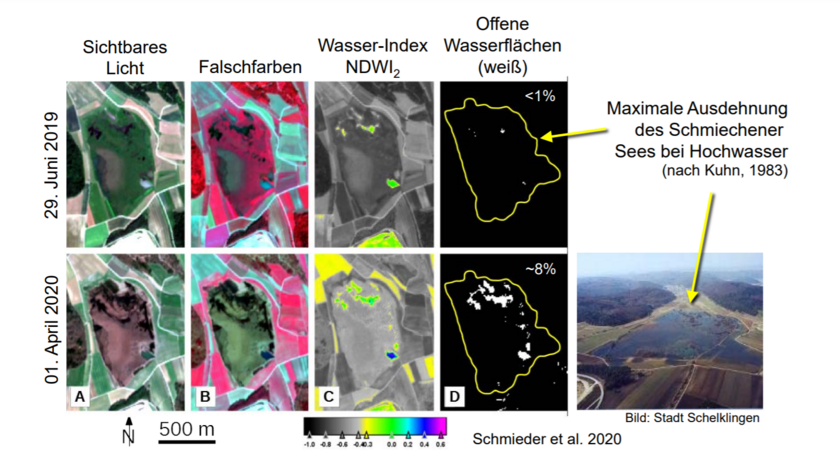
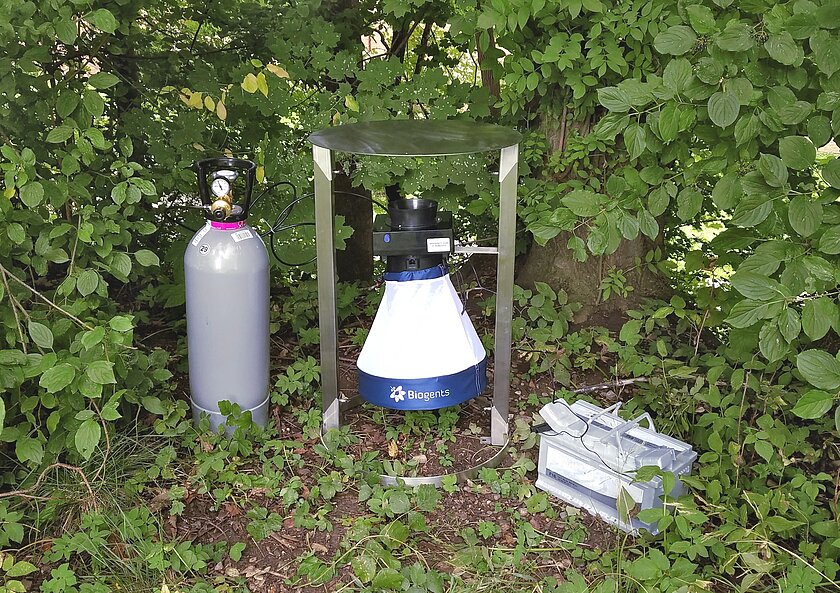
[11]
The second important instrument of the project, the digital mosquito trap, was finally brought into play by Prof. Dr. med. Walter Swoboda (opens in a new window) ("There are these mosquito counting machines!"). While researching the automated, digitally controlled trapping devices, the scientists came across the Regensburg-based company Biogents AG, which manufactures such digital mosquito traps and has now been HNU practice partner of the SWAMMP pilot study since October 2020. Dr. Silke Göttler, project supervisor at the Bavarian company and herself a PhD biologist, visited the DigiHealth team with their digital traps in their luggage and explained how they work. "We first had to learn how to do this," says Martin Schmieder, "because these traps are not designed to be so simple".
[12]
The mosquitoes are attracted by special attractants and carbon dioxide from a gas bottle, which is expelled in small quantities in batches to simulate the smell of the human body. A fan in the trap creates a suction effect that makes the CO2-enthusiastic insects fly through an infrared barrier with a digital counter into a small, close-meshed catch bag, where they wait to be microscoped and characterized after a night in the freezer. The counter divides the mosquitoes into three groups according to their size as soon as they fly in – this distribution, as well as other data and settings of the trap, can then be viewed and controlled via web interface from the HNU laboratory.
[13]
In the first test run with this digital BG-Trap Station, which was carried out in the summer of this year, the team familiarized itself with the use of the device in the Danube valley, in Neu-Ulms forest areas and on urban squares in Ulm, among other places, created a first small mosquito distribution map and discovered numerous mosquitoes of various genera, including less common species, during this short test phase. During the test run, the mosquitoes around the HNU also came under the microscope – all of them of the rather unspectacular type Culex pipiens, the common mosquito. Although they occur quite frequently, especially in the immediate vicinity of humans, they are nevertheless potential carriers of various diseases.
[14]
In addition to recording their main periods of activity, mosquito monitoring also provided an initial finding: the invasive species did not, as assumed, occur mainly in standing water, but often occurred precisely in the combination of periodically drying lakes and forest areas, not only in rural areas but also in cities. "Incidentally, there is also a hidden message in this finding," notes Elmar Buchner. "Every intervention in nature has its consequences, including ecologically positive activities that can also have negative feedback with regard to native and invasive mosquitoes.
[15]
With the kind permission of the State of Baden-Württemberg, the actual study area of the SWAMMP pilot study also underwent a test run: a lake in a nature reserve in the Swabian Alb. Lake Schmiechen – the largest permanent lake in the Swabian Alb and "d'r Sai", as it is called by the locals – represents the water type of the Asian shallow lake, which is very rare in Central Europe. Situated in a loop of the original Danube, it contains water-accumulating former floodplain sediments, which ensure that it is repeatedly flooded and then dries up again to a large extent and becomes silted up. This offers the scientists of the DigiHealth Institute ideal research conditions, because: The phase shortly before siltation is the perfect time for the mosquitoes to lay their eggs and breed.
[16]
The particular water fluctuations of Lake Schmiechen are also due to the low groundwater level in the Swabian Alb: "We found out that the water changes that we were able to observe and quantify using satellite data correlate quite well with the groundwater level, which is about ten meters higher than usual in spring," explains Martin Schmieder. A local weather station and the virtual groundwater level of Lake Schmiechen provided additional data for this. "This allowed us to assume that the lake and its water level are mainly controlled by groundwater level fluctuations and respond less to rainy days or similar weather trends". In addition to the actual mosquito monitoring, the team thus also gained insights into the geological and hydrological conditions of the lake, from which risk phases can be derived.

[17]
The DigiHealth Institute uses a total of six mosquito traps in its research: in addition to two digital BG-Trap Station traps, four analog ones are also used. The special thing about the digital mosquito traps: Monitoring is almost completely possible in remote mode. From the health management laboratory, it is thus possible not only to check the number of mosquitoes already baited on site, but also to adjust CO2 emissions, control temperature, humidity and brightness and regulate the fan. "In addition, we don't have to enter the nature reserve all the time," adds Martin Schmieder, who nevertheless regularly checks there at larger intervals and as prudently as possible to make sure that everything is in order and carries out ground truthing, i.e. verifies the satellite observations from space on site. Although the digital traps – and that is, as the geoscientist with a doctorate in geosciences explains, the big advantage – largely run by themselves, a little control is still necessary.
[18]
When the mosquito season starts next year, SWAMMP will enter the next phase: In addition to the stationary mosquito trap on the boggy western shore of Lake Schmiechen, the second, mobile trap station will then be used, which on the one hand will serve to monitor the rest of the lake and its sedimentation zones, but on the other hand will also be used to take a closer look at urban areas in Neu-Ulm and Ulm. The pilot study does not aim to stop the spread of invasive mosquito populations per se, this is neither the task nor the intention of the project, the scientists explain. Rather, SWAMMP makes an important contribution to the identification of risk areas – and not only for the region because: In the long term, the integrative methodology of the pilot study is to be adapted internationally.
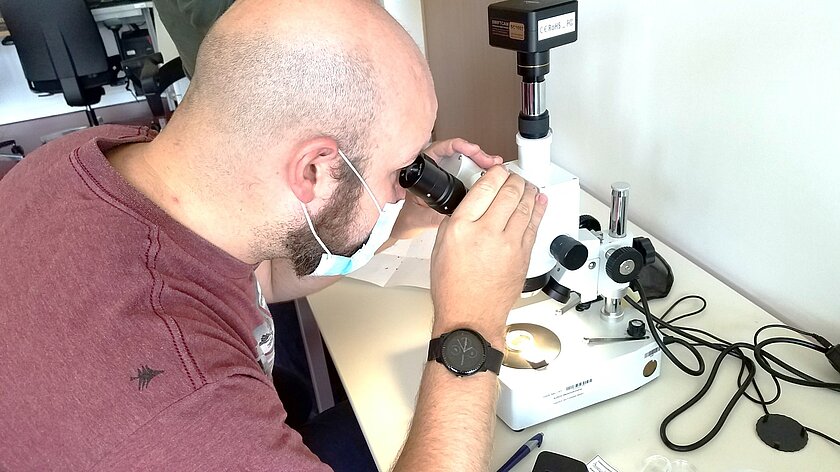
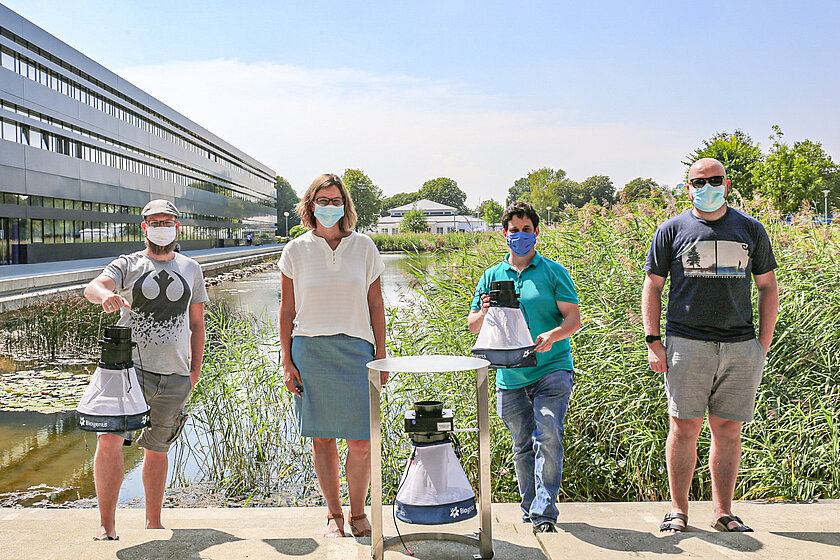
[19]
The initial plan is to transfer the project into a networked, Germany-wide monitoring of invasive and disease-transmitting mosquitoes. The model could then be transferred to countries such as Spain, Italy or Greece, where malaria has remained a permanent problem. In the future, explains Elmar Buchner, the project wants to get back to its roots: Once enough knowledge and practical experience has been gathered and the technology has been refined, the SWAMMP model should be applied in tropical countries and the Global South, where work in endangered areas is still carried out with relatively expensive and not without danger. The low-threshold technical conditions are ideal for this: "All you need is a laptop, the geological data is available with a little know-how, and the satellite data is freely available," says Elmar Buchner. "So with relatively low financial and material resources, it is possible to monitor huge areas in these countries and improve hazard maps. The latter should help to better control diseases that affect millions of people".
[20]
So if you go for a walk at Lake Schmiechen in the summer of 2021 and perhaps discover one of the blue and white Biogents traps of the HNU Institute DigiHealth there, you can rest assured: Lake Schmiechen is not an out-and-out breeding ground for dangerous mosquitoes – it is first and foremost a hydrologically particularly interesting regional location for a research project that will use modern digital monitoring to counter the small pests and their effects beyond the borders of Bavaria and Germany in the future.
PD Dr. Elmar Buchner
researches at the HNU (opens in a new window) in the field of georesources and georisk research. He is coordinator of the Technology Network Bavarian-Swabia (TBS) and responsible for strategic research funding at the university. Elmar Buchner is also active in the steering committees of six BayWISS joint colleges, which promote cooperative doctorates at Bavarian universities for applied sciences.
Dr. Martin Schmieder
is a geoscientist and research associate (opens in a new window) for scientific project management at the Institute DigiHealth of HNU. One of his main areas of research is geological remote sensing using satellite data in various application areas. Currently, he is investigating possible mosquito risk areas together with his colleagues in the SWAMMP project. Outside the SWAMMP project, Schmieder is also contact person and coordinator of the Joint Ethics Committee of the Universities of Bavaria (GEHBa (opens in a new window)) and active in the field of research funding at HNU.

